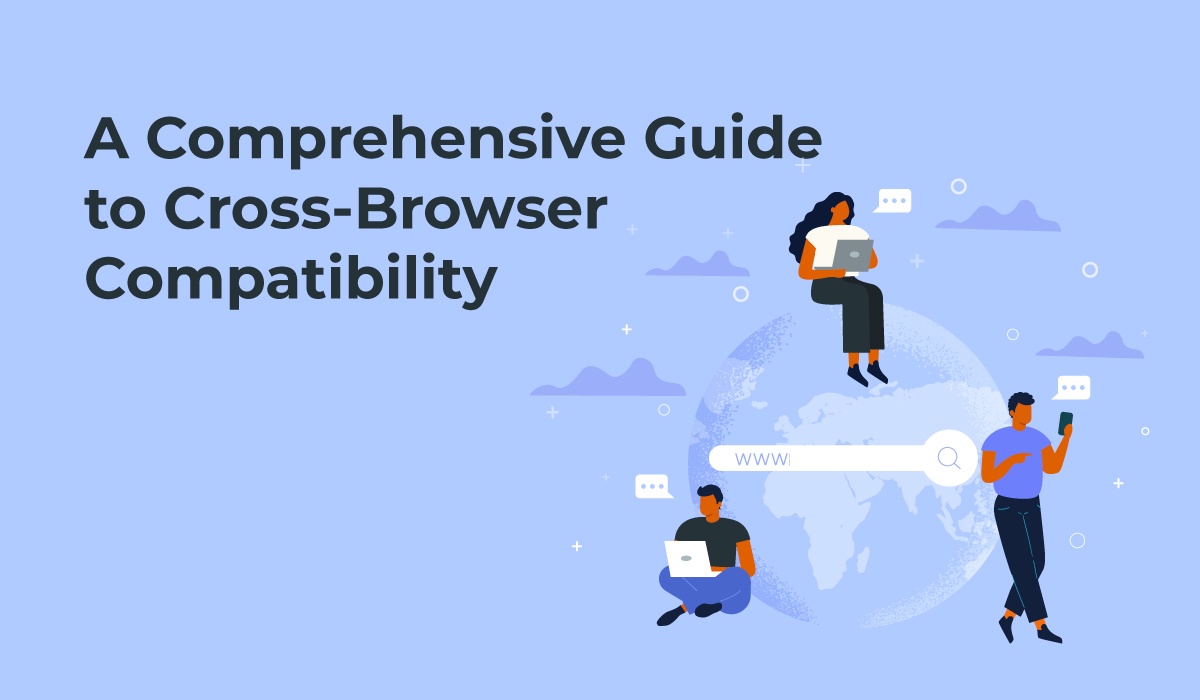In the vast landscape of web development, ensuring a seamless user experience across different web browsers is essential. As users access websites from a diverse array of devices and platforms, developers must prioritize cross-browser compatibility to maintain functionality, aesthetics, and accessibility. In this comprehensive guide, we'll delve into the importance of cross-browser compatibility, common challenges, best practices, and testing strategies to ensure your website performs flawlessly across all major browsers.
Why Cross-Browser Compatibility Matters
Cross-browser compatibility refers to the ability of a website or web application to function consistently and look identical across various web browsers. With users utilizing different browsers like Google Chrome, Mozilla Firefox, Microsoft Edge, Safari, and more, neglecting cross-browser compatibility can lead to a fragmented user experience, frustrated visitors, and potentially lost business opportunities. Here's why it matters:
-
User Satisfaction: Inconsistencies and glitches can deter users and drive them away from your website. A smooth experience regardless of the browser can improve user satisfaction and engagement.
-
Market Share: Different browsers have varying market shares. Ignoring compatibility with a widely used browser could mean losing a significant portion of your audience.
-
Accessibility: Cross-browser compatibility is closely tied to web accessibility. Users with disabilities often rely on specific browsers or assistive technologies. Ensuring compatibility ensures your site is accessible to all suggests a website development company Bangalore.
-
Search Engine Rankings: Search engines consider user experience as a ranking factor. A website with poor cross-browser compatibility may experience higher bounce rates, negatively impacting its search engine ranking.
Common Challenges in Cross-Browser Compatibility
Developing cross-browser compatible websites comes with its fair share of challenges:
-
Rendering Differences: Browsers interpret HTML, CSS, and JavaScript code differently, leading to variations in how a page is displayed. What looks perfect in one browser might be distorted or broken in another.
-
CSS Issues: Cascading Style Sheets (CSS) can behave differently across browsers, causing layout inconsistencies, spacing problems, or incorrect positioning of elements.
-
JavaScript Compatibility: JavaScript behavior can vary between browsers, leading to errors or unexpected outcomes. Certain features may work seamlessly in one browser but break in another.
-
Vendor Prefixes: Different browsers require different prefixes for certain CSS properties, leading to the need for browser-specific code.
-
Responsive Design: Ensuring a consistent experience across browsers becomes more challenging when dealing with responsive design, where elements adapt to different screen sizes.
Best Practices for Achieving Cross-Browser Compatibility
To overcome the challenges and ensure your website performs well across browsers, follow these best practices:
-
Use Standards-Compliant Code: Adhere to web standards defined by the World Wide Web Consortium (W3C). Write clean and valid HTML, CSS, and JavaScript code to increase the likelihood of consistent rendering.
-
Progressive Enhancement: Start with a basic, functional version of your website and then layer on more advanced features for browsers that support them. This approach ensures a baseline experience for all users.
-
Browser Testing: Regularly test your website on different browsers and versions. Consider both popular choices and less common ones to cover a wide range of users.
-
CSS Reset or Normalize: Use CSS reset or normalize stylesheets to eliminate default styling differences between browsers, providing a consistent starting point.
-
Vendor Prefixes and Compatibility: When using CSS features that require vendor prefixes, include all relevant prefixes to ensure compatibility across browsers.
-
Fallbacks for JavaScript: Provide alternative content or functionality for users with JavaScript disabled or encountering compatibility issues.
-
Responsive Design Testing: Test your responsive designs thoroughly across various devices and browsers to ensure elements adapt correctly to different screen sizes.
-
Avoid Browser-Specific Hacks: Although tempting, browser-specific hacks can lead to maintenance challenges. Instead, explore alternative solutions or use feature detection libraries.
Testing Strategies for Cross-Browser Compatibility
Comprehensive testing is at the heart of achieving cross-browser compatibility. Here's a testing strategy to ensure your website performs well across browsers:
-
Manual Testing: Manually test your website on different browsers and devices. Pay close attention to layout, functionality, and user interactions.
-
Browser Developer Tools: Utilize browser developer tools to identify and debug compatibility issues. These tools offer insights into how your website is rendered and help you make necessary adjustments.
-
BrowserStack or Sauce Labs: These tools provide cloud-based testing environments where you can test your website on various browsers and devices without having to install them locally.
-
Automated Testing: Implement automated testing using tools like Selenium or Puppeteer. Automated tests can quickly detect regressions across different browsers.
-
User Testing: Enlist a diverse group of users to test your website on different browsers and provide feedback. Real-world testing can uncover issues that automated tests might miss.
-
Cross-Browser Compatibility Services: Consider using services like Browserling or CrossBrowserTesting that offer testing on a wide range of browsers and platforms.
Conclusion
Cross-browser compatibility is not an option; it's a necessity in modern web development. Ignoring this critical aspect can result in a fragmented user experience, lower user engagement, and potential loss of business opportunities. By following best practices, conducting thorough testing, and staying vigilant for emerging browser trends, you can ensure your website provides a seamless experience for all users, regardless of the browser they choose. Remember, cross-browser compatibility isn't a one-time task; it's an ongoing commitment to delivering a consistent and satisfying user experience across the ever-evolving landscape of web browsing.


No comments yet